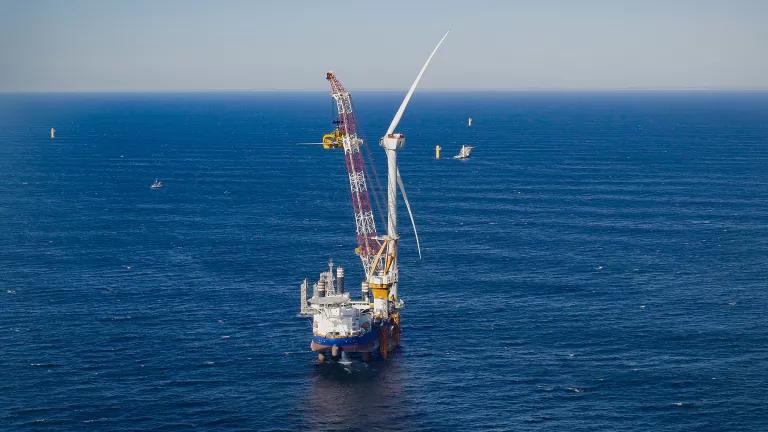Supporting Clean Energy Now More Than Ever
As a whole this package of incentives would provide a level of investment in clean technologies that hasn’t been seen at the federal level for a decade and will do some serious good in the fight to cut carbon pollution and address the climate crisis. That’s why we need Congress to pass this into law as soon as possible—while still committing to fixing its shortcomings.
At the end of last year congressional leaders were almost able to secure a victory for clean energy and climate action by including extension of critical clean energy tax incentives in the end-of-year spending package. Sadly, the White House and Republican leaders in Congress quashed that effort at the last minute and the clean energy sector was left with considerable uncertainty.
Now, because of the COVID-19 pandemic the amount of uncertainty has grown and for the first time in a decade we are seeing job losses in the clean energy sector (over 600,000 jobs lost since March) as well as hundreds of future projects being delayed or canceled. This is not only a problem for the workers in this industry, but for all of us as it puts our path to successfully addressing the climate crisis in jeopardy.
Thankfully, the House of Representatives is set to pass some serious investments into clean energy including updated versions of the tax incentives that almost made it across the finish line last year.
Rep. Mike Thompson of California, along with 47 co-sponsors, just introduced the GREEN Act (Growing Renewable Energy and Efficiency Now), which would provide badly needed updates and long-term extensions to clean energy tax incentives. It would provide some certainty for companies, investors and employees and help this now struggling industry bounce back stronger than before the pandemic.
It includes provisions we’ve been calling on Congress to fix for some time including, extending the solar and wind incentives and postponing their phase-out, increasing the cap on electric vehicle credits, enhancing the incentives for offshore wind, updating incentives for energy efficiency upgrades, and providing new incentives for energy storage. It would also reform publicly traded partnership rules to put clean energy on the same footing as traditional energy sources like oil drillers.
Notably, it includes new provisions that we are excited to see included, such as a tax credit for lower-income families to purchase used EVs, a new manufacturer credit for zero-emission commercial vehicles and zero-emission buses and a new credit for university programs focused on the impacts of climate change on low-income communities and communities of color.
The bill also has new provisions that will help ensure that clean jobs are high-quality jobs such as reviving the advanced energy project credit for manufacturing with a new prevailing wage requirement and adding an additional incentive for clean energy projects that engage in high-road labor practices, similar to the Good Jobs for 21st Century Energy Act.
I wish this bill was all good news, but unfortunately there continue to be incentives for technologies we know are not compatible with a clean and healthy future. Credits for electricity produced from biomass and municipal solid waste are technologies we know are harmful. Biomass energy produces more carbon pollution at the stack than coal and doesn’t recover that carbon in the time frame needed to address climate change. Municipal solid waste incineration puts toxic byproducts into the air, land and water. And both of these are often located in underserved and disadvantaged communities that would gladly see them shut down. Neither deserve continued federal support. It’s also time to question the effectiveness of the tax incentive for carbon capture and sequestration that so far has mainly been used for producing more oil from spent wells while verifying that the carbon pollution has actually been sequestered remains problematic. Should this tax credit continue to be provided without being able to verify the promised results?
Despite these problems, as a whole this package of incentives would provide a level of investment in clean technologies that hasn’t been seen at the federal level for a decade and will do some serious good in the fight to cut carbon pollution and address the climate crisis. That’s why we need Congress to pass this into law as soon as possible—while still committing to fixing any shortcomings.
Currently, all of these provisions have been included in the House’s massive climate friendly infrastructure bill, H.R. 2, the Moving Forward Act, a bill we support and hope will pass when it’s considered on the House floor next week. However, as good as that bill is, Senate Majority Leader Mitch McConnell has promised it will never come to up for a vote in the Senate. That’s unfortunate and demonstrates why House leaders need to be nimble in their approach to clean energy. We need House leaders to push these ideas in any upcoming stimulus or recovery packages that have a better chance to become law this year. Ensuring that the clean energy sector gets back on track and comes back stronger must be a top priority if we are ever going to properly take on the climate crisis. Doing so would help bring 600,000 Americans back to work and set the foundation for a stronger, cleaner and more resilient economy.



